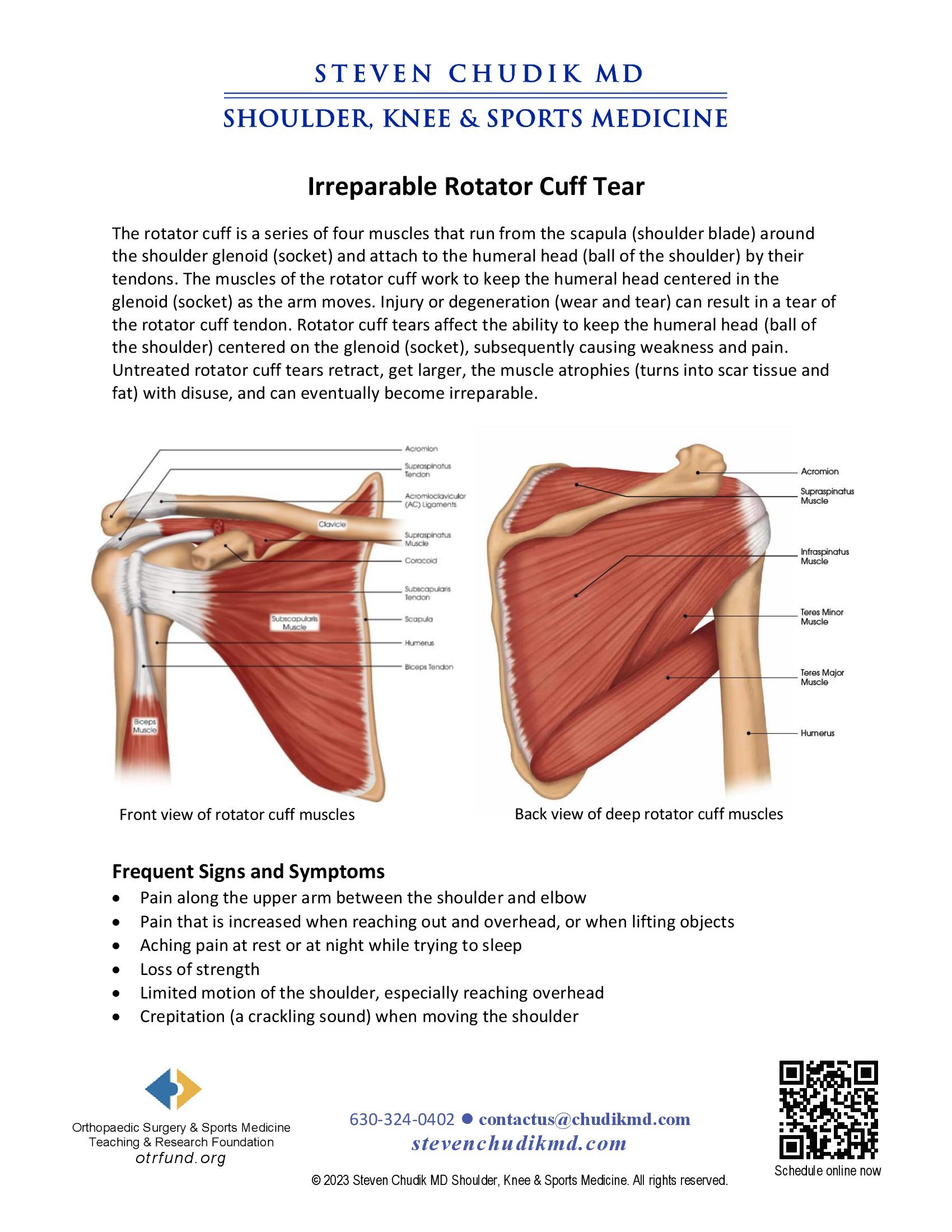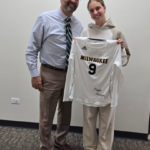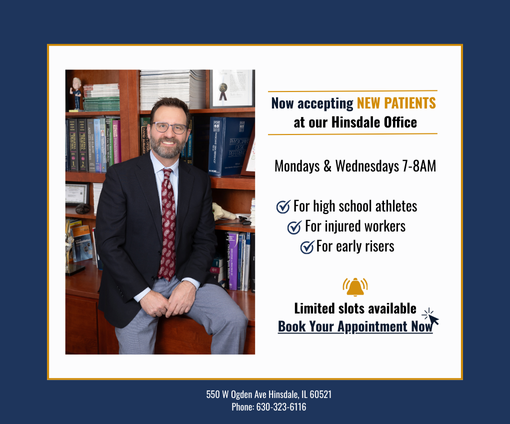Home / Shoulder / Shoulder Injuries and Conditions / Tendon injuries / Irreparable Rotator Cuff Tear
The rotator cuff is a series of four muscles that run from the scapula (shoulder blade) around the shoulder glenoid (socket) and attach to the humeral head (ball of the shoulder) by their tendons. The muscles of the rotator cuff work to keep the humeral head centered in the glenoid (socket) as the arm moves. Injury or degeneration (wear and tear) can result in a tear of the rotator cuff tendon. Rotator cuff tears affect the ability to keep the humeral head (ball of the shoulder) centered on the glenoid (socket), subsequently causing weakness and pain. Untreated rotator cuff tears retract, get larger, the muscle atrophies (turns into scar tissue and fat) with disuse, and can eventually become irreparable.
Learn More

 Overcoming Her ACL Injury Mentally & Physically: Stronger Than Ever
Overcoming Her ACL Injury Mentally & Physically: Stronger Than Ever
Dr Steven Chudik founded OTRF in 2007 to keep people active and healthy through unbiased education and research. Click to learn about OTRF’s free programs, educational opportunities and ways to participate with the nonprofit foundation.
1010 Executive Ct, Suite 250
Westmont, Illinois 60559
Phone: 630-324-0402
Fax: 630-920-2382
(New Patients)
550 W Ogden Ave
Hinsdale, IL 60521
Phone: 630-323-6116
Fax: 630-920-2382
4700 Gilbert Ave, Suite 51
Western Springs, Illinois 60558
Phone: 630-324-0402
Fax: 630-920-2382

© 2025 © 2019 Copyright Steven Chudik MD, All Rights Reserved.

